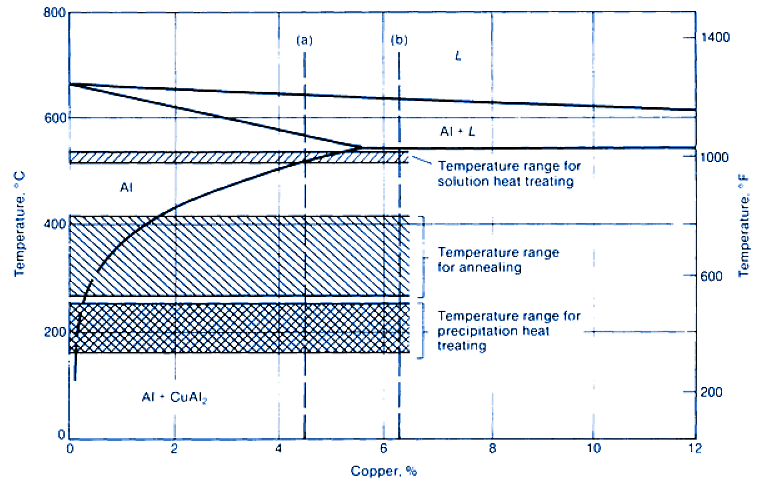Related Resources: materials
Heat Treating of Aluminum Alloys
Heating treating refers to any of the heating and cooling operations that are performed for the purpose of changing the mechanical properties, the metallurgical structure, or the residual stress state of a metal product.
When the term is applied to aluminum alloys, however, its use frequently is restricted to the specific operations employed to increase strength and hardness of the precipitation-hardenable wrought and cast alloys. These usually are referred to as the "heat-treatable" alloys to distinguish them from those alloys in which no significant strengthening can be achieved by heating and cooling. The latter, generally referred to as "non-heat-treatable" alloys, depend primarily on cold work to increase strength. Heating to decrease strength and increase ductility (annealing) is used with alloys of both types; metallurgical reactions may vary with type of alloy and with degree of softening desired.
 |
| Portion of aluminum-copper binary phase diagram. Temperature ranges for annealing, precipitation heat treating, and solution heat treating are indicated. The range for solution treating is below the eutectic melting point of 548 deg C (1018 deg F) at 5.65 wt% Cu. |
 |
| Equilibrium solubility as function of temperature for (a) Mg2Si in aluminum with an Mg-Si ratio of 1.73-to-1 and (b) magnesium and silicon in solid aluminum when both Mg2Si and silicon are present. |
Strengthening by Heat Treatment:
-
Solution heat treatment: dissolution of soluble phases
-
Quenching: development of supersaturation
-
Age hardening: precipitation of solute atoms either at room temperature (natural aging) or elevated temperature (artificial aging or precipitation heat treatment)
Related
- Heat Treating Terms and Definitions Definitions Starting A - H
- Heat Treating Terms and Definitions Terms H - Z | Heat treating
- Heat Treating Common Steels Temperature and Quenching Medium Chart
- Heat Treating Steel Time vs Temperature and Case Harden Thickness
- Heat Treating of Aluminum Alloys
- Heat Treating Stainless Steels Table Chart